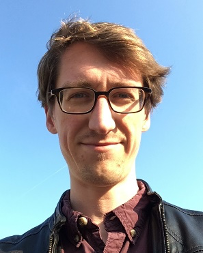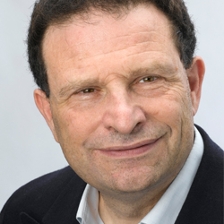Panel 1: Life sciences and their uses
Introduction
Chair: Miguel García-Sancho (University of Edinburgh)
Content
James Lowe, University of Edinburgh
'Making sequence data genomic: species, communities and forms of organisation'
- Biography
-

James Lowe is a Senior Research Fellow at the University of Edinburgh working on the TRANSGENE project. He is interested in the history and philosophy of biology, particularly genomics and developmental biology, and scientific practice. As part of the TRANSGENE project, he is currently interested in translational research and works on the development of genomic science and the history of the pig genome mapping and sequencing initiatives in particular. Combining archival research with interviews and insights from social studies of science and Innovation Studies, he studies why the objective of completing and making the sequence available was adopted in preference to other models that prioritised the usability of the data.
- Abstract
-
In this paper, I argue that the relationship of a reference DNA sequence with the communities that produced and use the sequence data profoundly shapes the perceived potential of that data as a genomic representation. I show this by examining three international projects that finalised the first whole-genome reference sequences of yeast, human and pig between 1996 and 2011. While a majority of the laboratories determining the yeast genome also used the sequence data to study the biology of this organism, the human reference sequence was produced by large-scale genome centres that were distinct from the communities of human and medical geneticists. The pig reference genome was also primarily determined at large-scale centres, but in close collaboration with animal geneticists.
The yeast genome represented only one specific strain: S288C of S. cerevisiae, that had previously been adopted by life scientists from different fields as a model organism. The Human Genome Project presumed its reference sequence to be an abstract representation of humans in their diversity. By contrast, the pig genetics community’s awareness of the limits of the representational scope of the reference sequence encouraged the development of versions appropriate to distinct breeds and requirements.
The different ways in which the representativeness of reference sequences was constructed and construed suggests that the ‘translational gap’ that post-genomic research endeavours to bridge may be an artifactual generalisation: it fails to capture the distinct historicities of genomics in non-human species, where the distance between the sequence and user communities is not as pronounced.
- Discussion summary
-
The discussion after James’ presentation focused first on the alleged exclusion of medical geneticists in the Human Genome Project. Lowe explained that exclusion may not be the best word, and that instead medical geneticists were often more focused on specific regions of the genome and so were less interested in sequencing the whole genome. Sequencing the whole genome was more a priority of molecular biologists. As a result, they were the ones who obtained funding for the large-scale sequencing programmes in the US and UK, which then sidelined medical geneticists. However, the private company Celera, who were also seeking to sequence the whole human genome, wanted the participation of medical geneticists for their expertise in annotating the genome. They invited them to events that continued the community-based annotation approaches pioneered in the prior genome programme of the fruit fly (Drosophila melanogaster). Medical geneticists therefore had a different form of participation or role in human genomics.
The second issue brought up concerned the ongoing development of reference genomes and their representational and infrastructural functions. The systematic and functional modes of post-reference sequencing raised in the presentation were discussed again. These were the two main modes of sequencing that Lowe identified, following the original production of the reference genome. One of these modes focused on exploring diversity (the systematic mode) and the other elucidated the roles of parts of the genome in biological processes (the functional mode). These modes could be conducted in combination with each other or more separately, but how each reference genome was produced and used depended on the particular history of the communities involved. In each case, though, the original reference genome functioned as a scaffold for these further modes of sequencing.
Catherine Heeney, University of Edinburgh
'Genetic data from the clinic to the database and back again?'
- Biography
-

Since May 2019 Catherine Heeney has been a senior researcher on the Optimising ePrescribing Project within Edinburgh University's Usher Institute. This work forms part of an ambitious and policy facing Programme of work headed by Professor Aziz Sheikh - looking at digital infrastructures, which will form the basis of healthcare management within the NHS. Previously, Catherine was based within Science, Technology and Innovation studies at Edinburgh looking at how the concept of risk informed scientific work on the genetics of common complex disease. This was part of a Wellcome Trust funded project Making Genomic Medicine, headed by Steve Sturdy.
Catherine has worked at the Spanish National Research Centre in Madrid in the Department of Science, Technology and Gender at the Institute of Philosophy and at the Ethox centre within the Department of Public Health at the University of Oxford. Her research has looked at many interrelated aspects of genetics and health, including ethical and sociological issues around scientific collaboration and data sharing.
- Abstract
-
Sabina Lionelli has described the data journeys, in which data traverses different contexts and are mobilised and used in distinct ways. In each of these contexts their social, ethical and scientific meaning is changed, whilst at the same time retaining traces of what brought them into being. This talk will focus on the moves to harness data collected via the administration of health services by the UKs National Health Service for use in research. The past two decades have seen data from the NHS become available for research with the consent of those to whom the data pertains, via biobanks such as the UK Biobank and Generation Scotland.
It has also seen more controversial moves to release data in a more open fashion via the NHS Digital Database. I will discuss how, both the technical and policy, groundwork has been laid for these moves, which relate to changing standards of access. In particular, I will provide examples of how the notion of using genetic data for research has been mobilised to enable gradual shifts, which have opened up public sector data, collected for particular purposes and with particular contextual norms, to use by a variety of actors. Ultimately, I will argue that whilst this has ethical and social consequences, the goal of providing data of use within the health care setting prevails.
- Discussion summary
-
The discussion focused on what implications the proposed changes to the General Data Protection Regulation (GDPR) in the UK following Brexit may have for future use of health care data. It remains elusive, however, as to what the exact changes will be. Either way, it may change things quite a bit in how the private sector may access data.
The conversation continued with a discussion about how Wellcome designated existing collections and data as community resources and how the potential uses by communities who did not participate in their production were envisioned. When making its collections open access, Wellcome may have communities in mind who had better resources to use and exploit the data. As a result, it was concluded, Wellcome’s was more of a top-down approach to making data accessible. While not equally accessible across the communities, this was still a move towards greater openness more generally.
Hugh Williamson, University of Exeter
'Consolidating plant breeding databases: molecular breeding and the integration of international agricultural research'
- Biography
-

Hugh Williamson is a Social Anthropologist and Research Fellow at the University of Exeter on the Alan Turing Institute-funded project "From Field Data to Global Indicators: Towards a Framework for Intelligent Plant Data Linkage". His research interests have been shaped by themes from the anthropology of science; science and technology studies (STS); and the history and philosophy of science, initially with a focus on ecology and, latterly, plant science and crop breeding. Broadly, his research takes a qualitative and practice-oriented approach. Currently, he is investigating data management in plant science for food and agricultural applications. He is particularly interested in new applications of quantitative genetics and selection theory in plant breeding that have been made possible by genomic technologies, and the implications of these for international agricultural research and development.
- Abstract
-
Ongoing changes to international agricultural research networks are shifting plant breeding to a data-intensive activity that integrates genomic, phenotypic, environmental and socioeconomic data, in order to improve the efficiency, speed and targeting of breeding. This is part of a concerted effort to modernise plant breeding in the developing world with molecular breeding strategies, spearheaded by the CGIAR network and their funding bodies, notably the Gates Foundation. Because of the dispersed and frequently under-resourced nature of many breeding programmes, strategies for implementing data-intensive breeding have focused on developing shared, open-access platforms for data integration and analysis.
This is being matched, however, by an increasing centralisation of those platforms in the CGIAR, demonstrated in successive efforts to replace the diversity of data systems in use across different institutions with a single, multi-functional set of resources that span not only plant breeding but also animal breeding. This raises questions concerning what is lost and retained between diverse and centralised data platforms, especially where the former have been adapted to the needs of particular crop breeding communities, including the specificity of crop species and field environments. This paper will track the back-and-forth of developments in plant breeding data platforms in the twenty-first century, paying attention to the interplay of specificity, openness and centralisation as breeding is expanded to incorporate new molecular methods and data. The paper will also reflect on the challenges of collecting and representing histories of plant data platforms, as we have been attempting at Exeter in the PlantDBMap.
- Discussion summary
-
Most of the discussion focused on the regimes of evaluation in plant breeding. Increasingly, these focus on delivering genetic gains, especially in the forms of more efficient breeding. This requires data analysis and management, and that new crops are brought to market as quickly as possible. This is a more centralised regime in which markets and economic gains are at the centre.
In the debate, it was indicated that these regimes were also becoming increasingly formalised, albeit at an early stage. However, there is a split between people advocating centralisation and those favouring more participatory trials of new crops. The former focus on market research and delivering genetic gains, while the latter want to interact with farmers and contend this will improve the products. The latter approach mobilises different regimes of evaluation and does not just focus on efficiency but also on other needs of farmers.
Robert Bud, Science Museum, London
‘Commentary on Panel 1: Life sciences and their uses (Chaired by Lukas Engelmann, University of Edinburgh)’
- Biography
-

Robert Bud is an Emeritus Keeper at the Science Museum in London. His current focus is on the nature of modernity. He is working on the history of Applied Science from the Fall of the Bastille to the Raising of the Iron Curtain and on the conflict between science and religion underlying the rise of molecular biology. His publications include monographs on the history of biotechnology and of penicillin. He has been a visiting Professorial Fellow in the Department of History at Queen Mary University of London, The Sarton Professor at the University of Ghent and is a winner of the Bunge Prize for the History of Scientific Instruments. He is a past council member of both the Society for the History of Technology and the British Society for the History of Science.
- Discussion summary
-
The discussion focused mainly on Bud’s first question: what happens when the pig-pork barrier is crossed and how can this transition from data production to consumption be tracked? This was mainly interpreted as a call to focus more on the users and consumers of data platforms and the products that come out of them; to follow the supply chain all the way to the end. A query was raised about how the studies of data trajectories and data journeys – for example, those discussed in the earlier presentations – can be linked to users and consumers. It was suggested that a focus on data journeys risks missing broader contexts, especially the political economy surrounding the data, and instead keeps an emphasis on the particularities of the specific data that the study addresses.
How could research incorporating consumers and different kinds of use be promoted, and where might these studies start – investigating specific products, audiences, or uses of data? This research agenda, it was advanced, would need to include issues of centralisation and decentralisation that were apparent in all presentations, but especially Williamson’s work on plant breeding. The idea of community resources was suggested as a way of approaching the above problem and for looking at how data resources and platforms become appropriated by particular communities, thereby focusing on both the production and use of such data.
The discussion focused less on Bud’s second question concerning how the life sciences and medicine are different from engineering. Related to the this discussion, though, it was suggested that consumers are more prominent in research on engineering and that it could be one of the reasons that it was more prominent in Williamson’s work on plant breeding than in the other life science-centred presentations.
